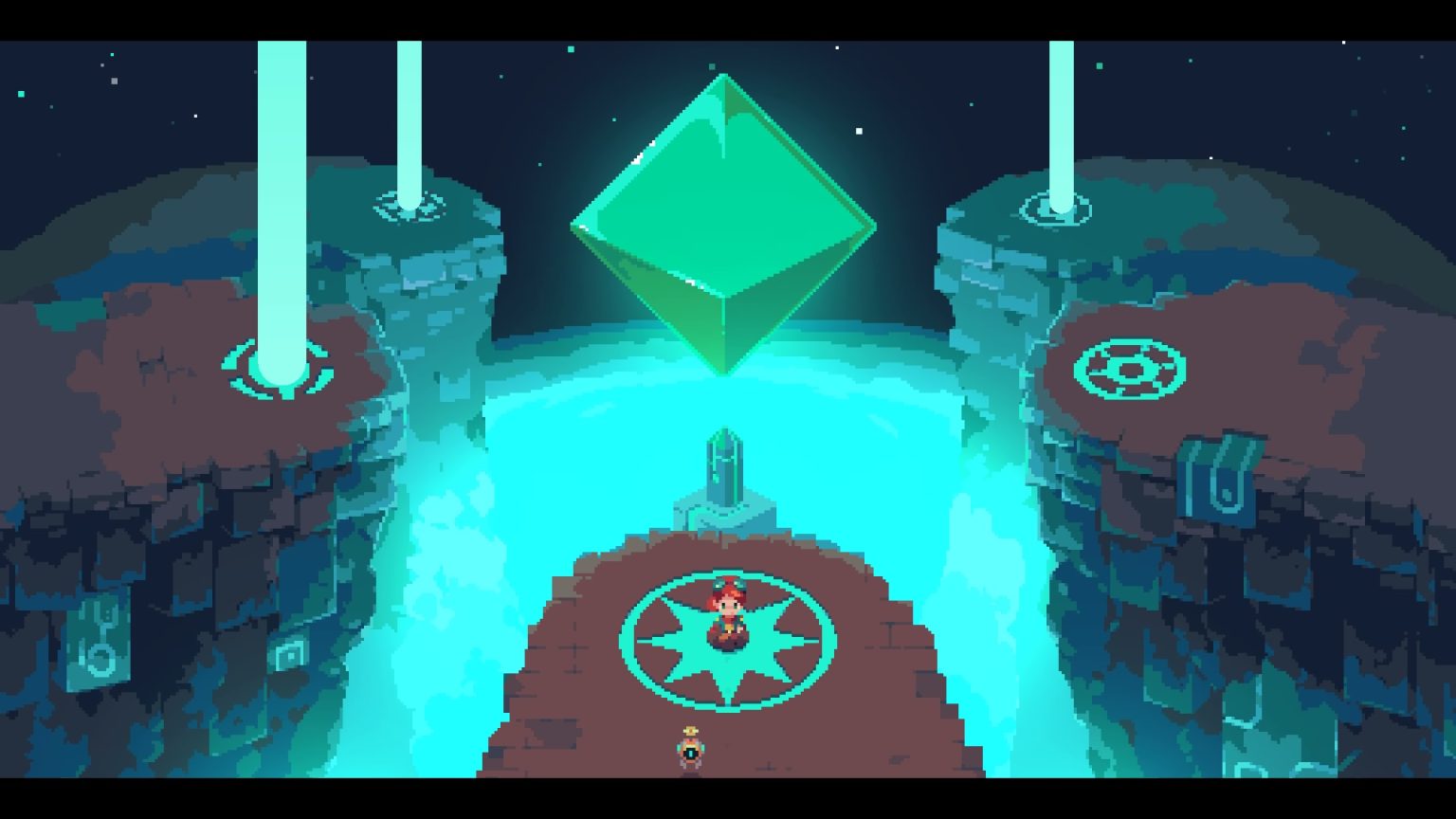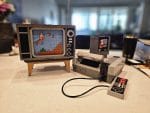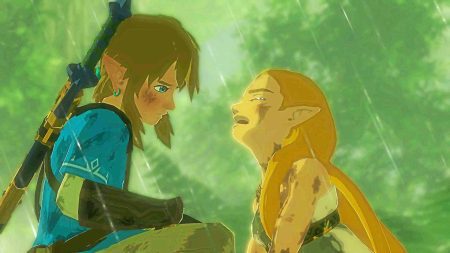Sparklite Review: A Fresh, Imperfect Spin on Zelda
Anyone who has played a video game knows the importance of the Legend of Zelda franchise. For 35 years, Zelda has been responsible for pioneering, refining, and reinventing the action-adventure genre.
Given the wide appeal of Zelda, it’s no surprise companies have attempted to replicate the series’ success. Some efforts, like Ittle Dew 2+ and Blossom Tales, have been good. Countless others have been bad. Regardless, they all tend to follow the same archetype: Explore an overworld, find various items, complete “X” dungeons, save the world.
It’s surprising, then, to see a game with as many unique ideas as RedBlue Games’ Sparklite. Inspired by roguelikes such as Rogue Legacy and The Binding of Isaac, Sparklite presents a Zelda-like experience, but with a twist: Each time you die, the overworld procedurally regenerates, providing a novel experience each time you respawn.
Unlike traditional roguelikes, Sparklite lets you carry over currency earned in-game to invest in permanent upgrades for future attempts. What’s more, any major bosses you’ve defeated stay defeated, whether you’re on your first run or your 30th. The result is an accessible game that pulls from many sources of inspiration, yet feels surprisingly unique.
Unfortunately, with that uniqueness comes several problems — particularly from a design perspective, but also in terms of general polish. Couple those issues with a short run-time, and Sparklite feels like a good game knocking at the door of something great.
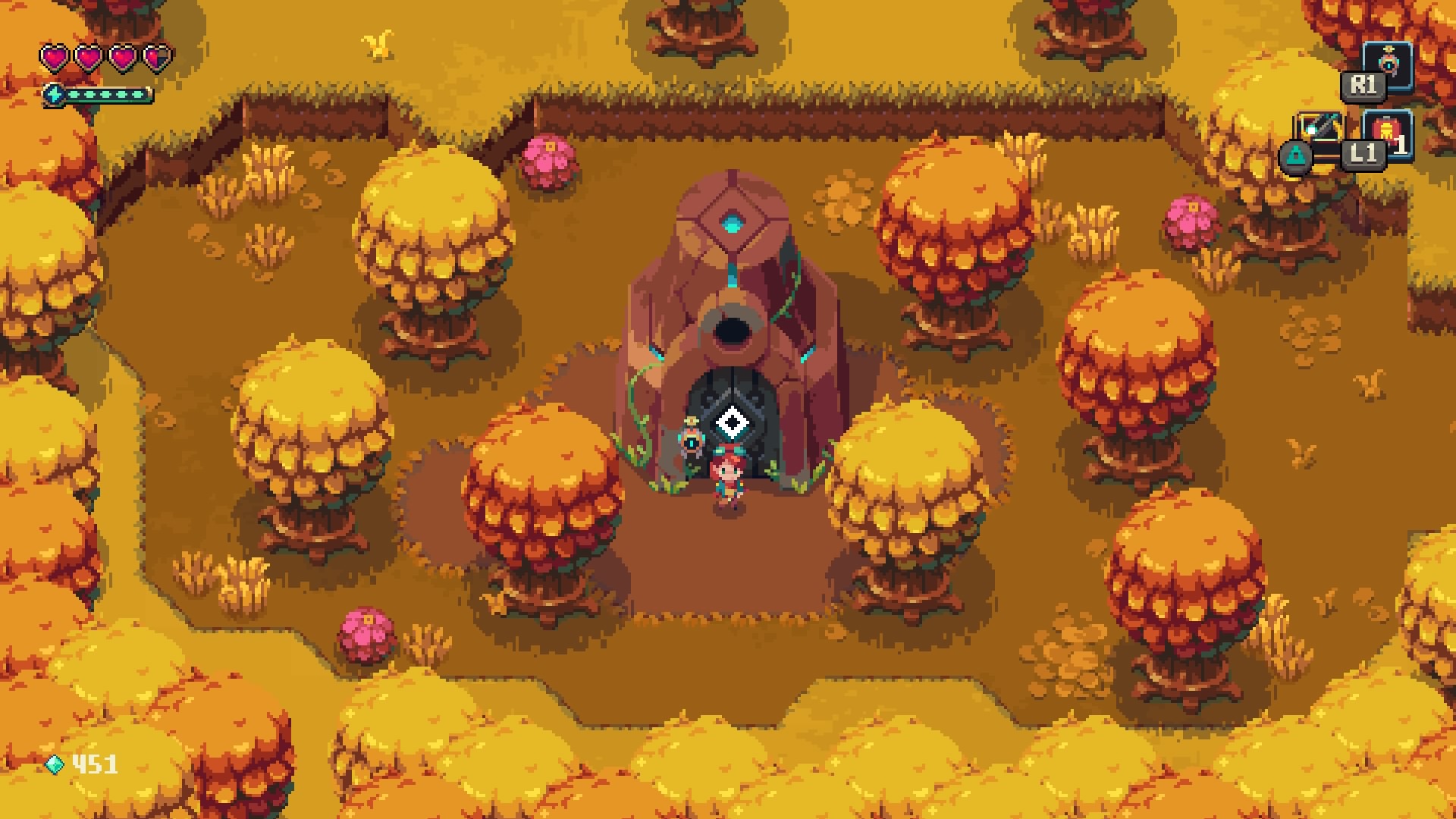
A Familiar Quest
Sparklite’s story is as simple as they come. The game takes place in the world of Geodia, a wondrous land that thrives off a resource called Sparklite. Despite its beauty, Geodia has been corrupted by the “Baron” — an evil-doer hell-bent on extracting the world’s Sparklite for his own personal gain. One day, a young mechanic and pilot named Ada crash-lands in the plains of Geodia. Armed with her trusty wrench and hammer, Ada must explore and conquer five biomes to put a stop to the Baron’s misdeeds.
This is a story any gamer has experienced. Yet what Sparklite lacks in storytelling novelty, it makes up for in its gameplay. Geodia is home to many creatures, many of which have become hostile due to the Baron’s corruption. In typical Zelda-like fashion, players slice and dice enemies with Ada’s wrench (i.e., sword) and hammer. The latter of the two acts as a charge-up attack, which strikes enemies for massive damage. There’s also a dash move, which can be used to close the gap between you and your foes — or make for a quick getaway. It’s a simple combat system, but one that controls well and feels great.
In another homage to Zelda, Ada starts off with a small pool of hearts. Unlike in Link’s escapades, however, you won’t find hearts slicing grass, and will only seldom discover them when defeating foes. In other, somewhat poetic, words: Death is inevitable.
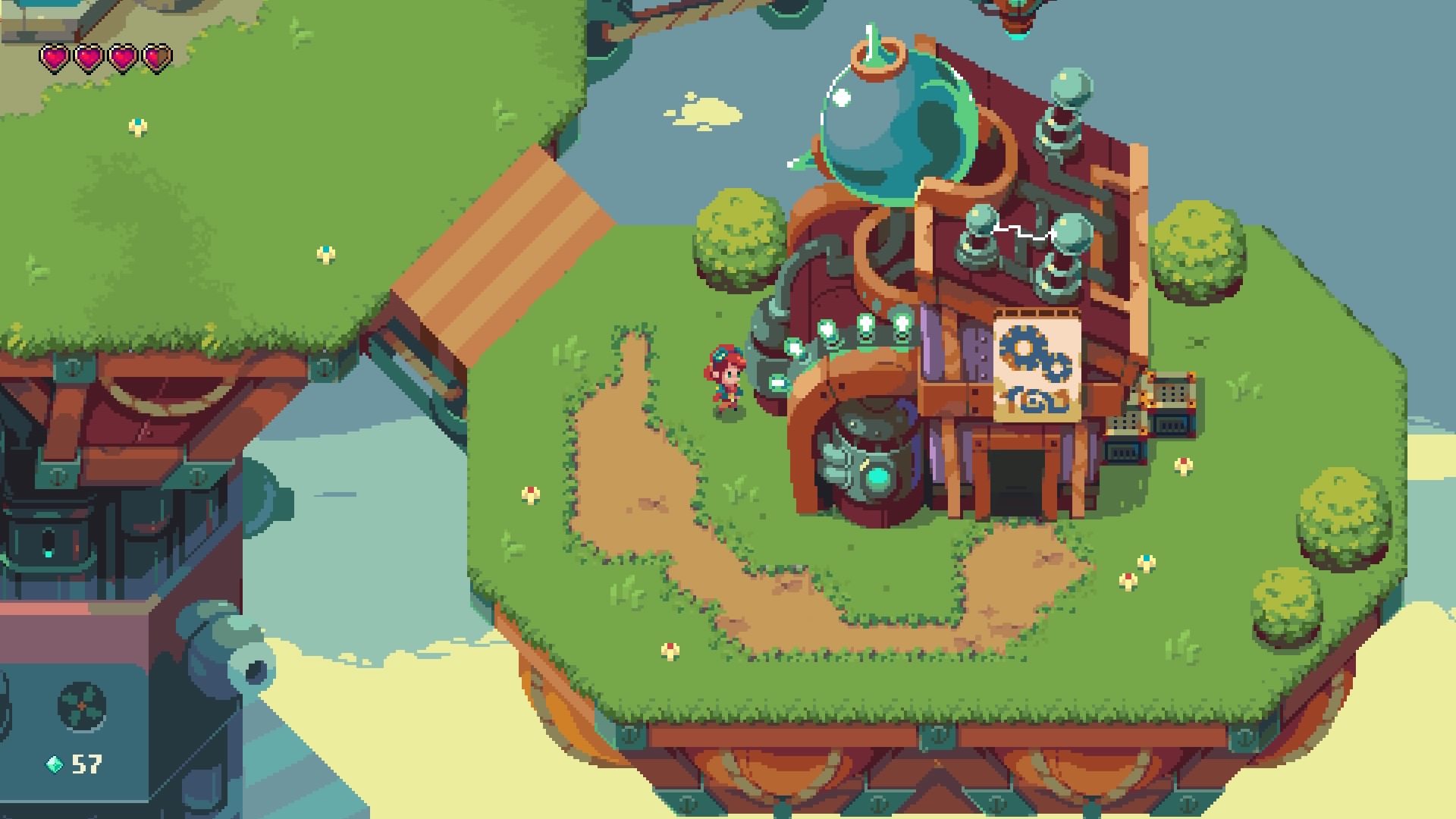
The Hub of Opportunity
Upon dying, Ada is whisked away to a floating village known as The Refuge. There, she befriends the people of Geodia. (Side note: I have no clue whether that town is the extent of human civilization, or if there are other settlements in Geodia. The game’s story never delves that deep.)
She may have been bested down on Geodia’s surface, but at The Refuge, Ada has access to a myriad of tools to prepare for future trials. By spending Sparklite earned by defeating enemies, Ada can buy powerful upgrades to level the playing field. From heart pieces to damage upgrades, these enhancements serve as permanent tools in Ada’s arsenal. In a neat wrinkle, Ada must first install her upgrades onto a grid with limited space, a la Resident Evil 4, before she can take advantage of them. This forces players to pick and choose the right upgrades for the job at hand.
In addition to permanent upgrades, Ada can also procure various use-’em-or-lose-’em widgets that expire at the end of each run. These range from regaining health and augmenting your movement speed to special attacks and defense buffs. While not especially powerful (save for the ones that keep you alive longer), they can help you when you’re in a pinch.
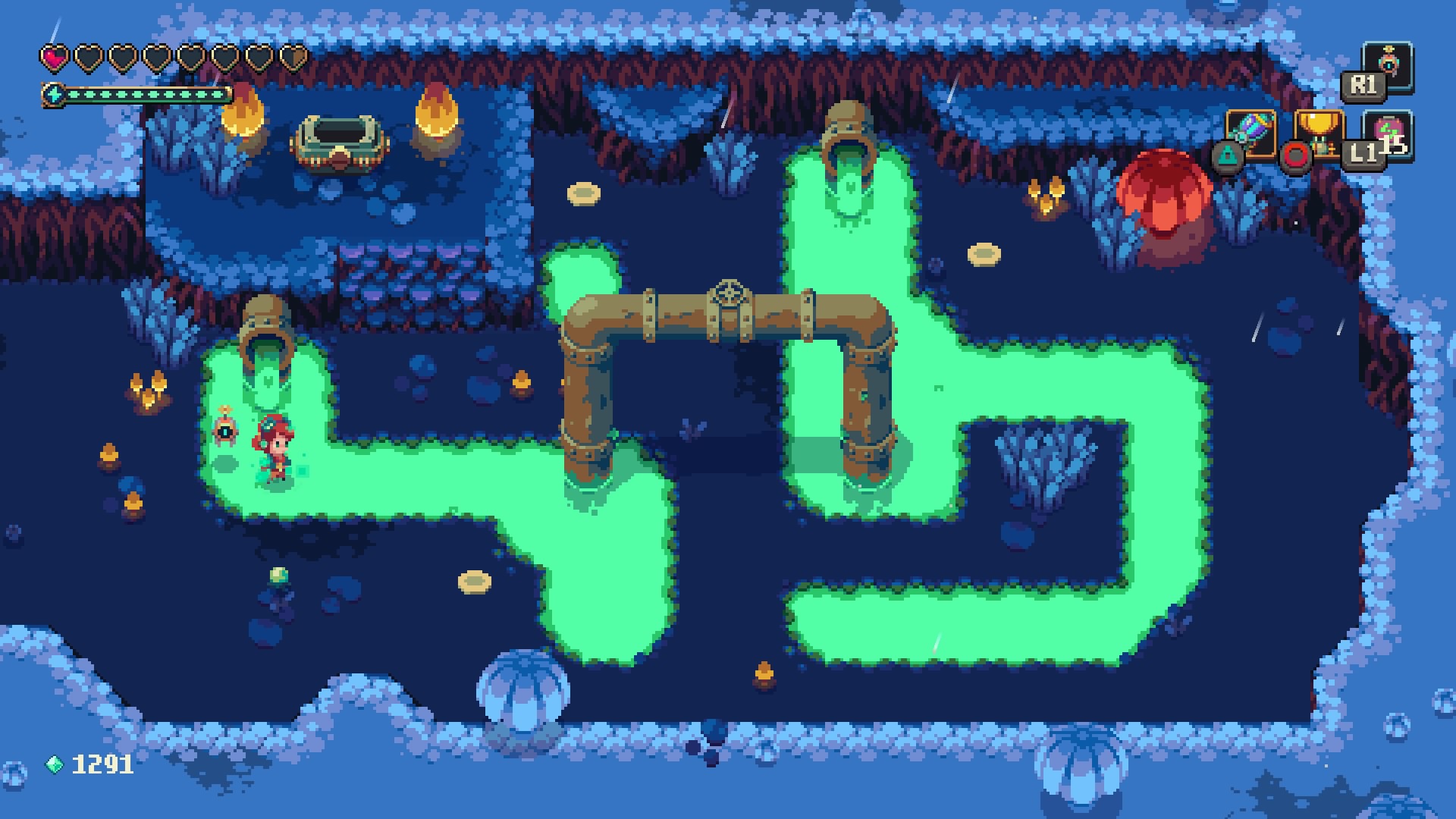
A Whole New World
Once Ada’s been outfitted with new gear and gizmos, she’s free to return to the surface and continue her quest. Each time she does, the world shifts, replacing itself with a newly generated version for players to explore.
Here’s where the uniqueness of Sparklite shines. As with top-down Zeldas like A Link to the Past, Sparklite’s overworld is divided into distinct screens. When the world shifts, these screens get jumbled up and fitted back together, like pieces of a puzzle. Some screens show up in different locations than before. Others disappear entirely, replaced by new screens featuring fresh scenarios and enemy placements. Regardless, each run offers something new compared to the last — even if the general pieces themselves are presets.
If you think that sounds an awful lot like the chamber dungeons from the recent Link’s Awakening Switch remake, you’d be only partially right. Chamber dungeons received a lot of flak from fans and critics due to how under-cooked they felt. The magic of Zelda dungeons have always come from their intricate, multi-screen puzzles. So for chamber dungeons to try and distill the formula down to basic, one-panel rooms… It simplified the experience to the point where it just wasn’t terribly fun.

The Road to Self-Improvement
Sparklite’s procedural generation takes a different approach. The game focuses almost entirely on its overworld, relegating dungeons to smaller, bite-sized challenges (not unlike Breath of the Wild’s shrines). In fact, aside from these mini-dungeons and a few tough-to-reach chests, there are hardly any puzzles to be found in Sparklite at all. The focus, rather, is on exploration and combat.
To Zelda purists, these changes might seem unthinkable. Heck, I’d be lying myself if I said I didn’t miss the occasional brain teaser. But in deviating from the norm, Sparklite is able to go all-in on its procedural vision — and largely finds success in its pursuit.
Progression is the other big piece of the equation. Each of Geodia’s five biomes is home to one of the Baron’s nasty henchmen. These cronies serve as tough but fun boss encounters that will test both your skills and your mettle. If you die (likely, especially in the game’s early hours), you’ll be able to invest in upgrades or tweak your existing build to make future attempts less daunting.
While the core combat may be simple, and the game world itself relatively small, this mix of procedural generation and constant progression helps Sparklite feel decidedly larger than the sum of its parts.
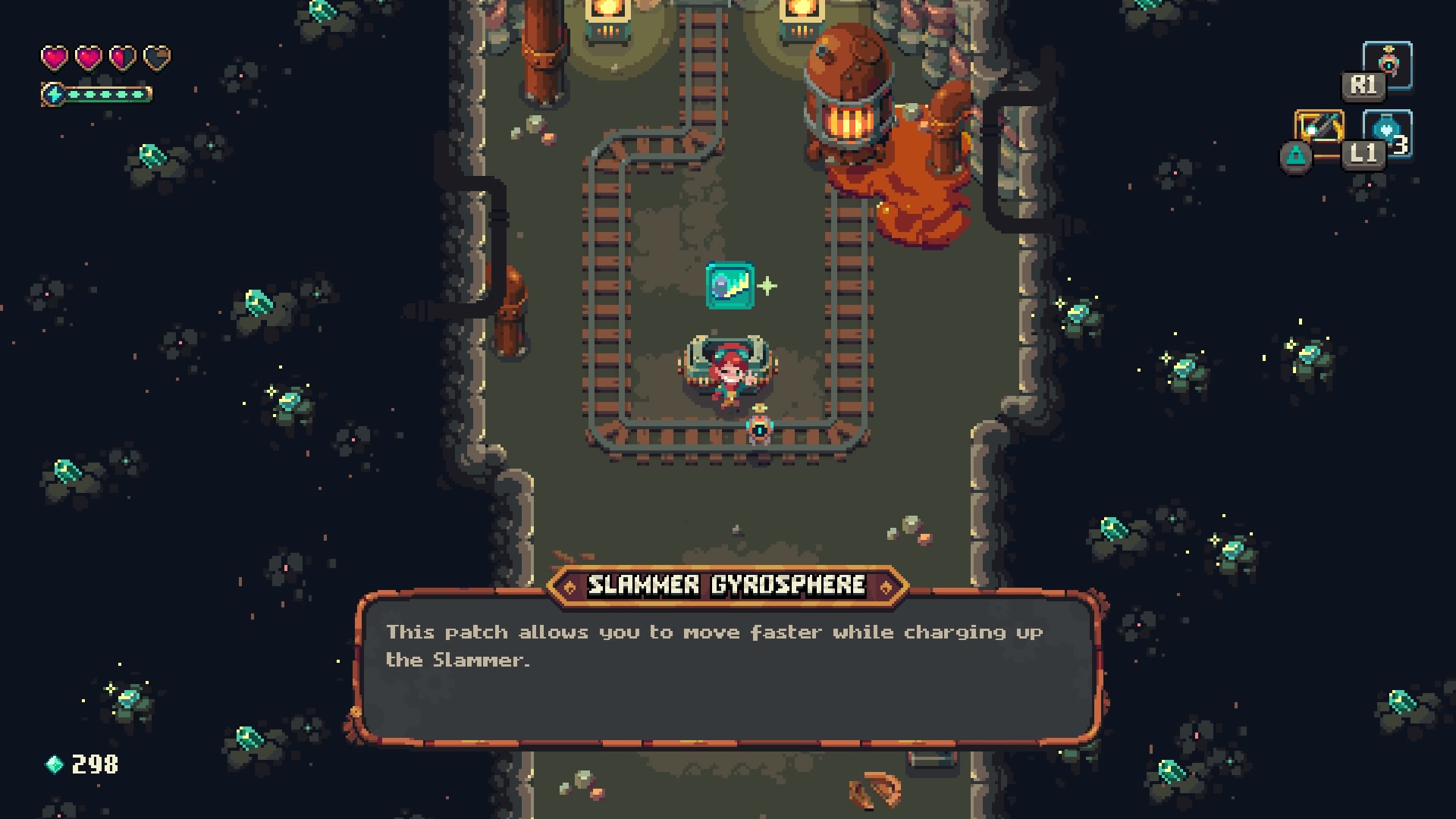
Pushing Through the Kinks
Unfortunately, this approach has its drawbacks. While the ever-changing overworld is an imaginative spin on Zelda, it doesn’t go quite far enough in its execution. Screens feel samey, due in large part to repetitive environments and a lack of enemy variety. Enemies also tend to be stingy with the amount of Sparklite they drop. As a result, runs can often feel like a grind — an artificial means of padding Sparklite’s noticeably short (4 to 6 hours) length.
Making matters worse, many of the upgrades available to players aren’t fully fleshed out. Take the game’s sub-weapons, for instance. Blueprints for these supposedly powerful, ancient weapons are found within each of the game’s various mini-dungeons. For a steep sum, Ada can develop actual weapons from the blueprints back at The Refuge. However, despite the time and effort invested into these weapons, they’re all relatively weak compared to Ada’s standard wrench and hammer. It doesn’t help that they require a separate resource — earned by landing hits on enemies — to activate.
The game also suffers from a wide array of strange bugs and other oddities. For instance, every enemy attack in the game has a matching sound effect, save for that of a particular hammer-wielding minion, which is mysteriously silent. Same goes for a particular set of switches within one of Sparklite’s interior environments. There’s a chest on the overworld that is perpetually bugged, as well as an NPC that says he’ll show up in a particular area, only to be a no-show. There are others I’m sure I’m forgetting.
None of these flaws are enough to sink Sparklite. It’s ideas are too interesting. But the longer I played the game, the more I realized RedBlue Games is on the cusp of something special — it just hasn’t quite nailed it, yet.
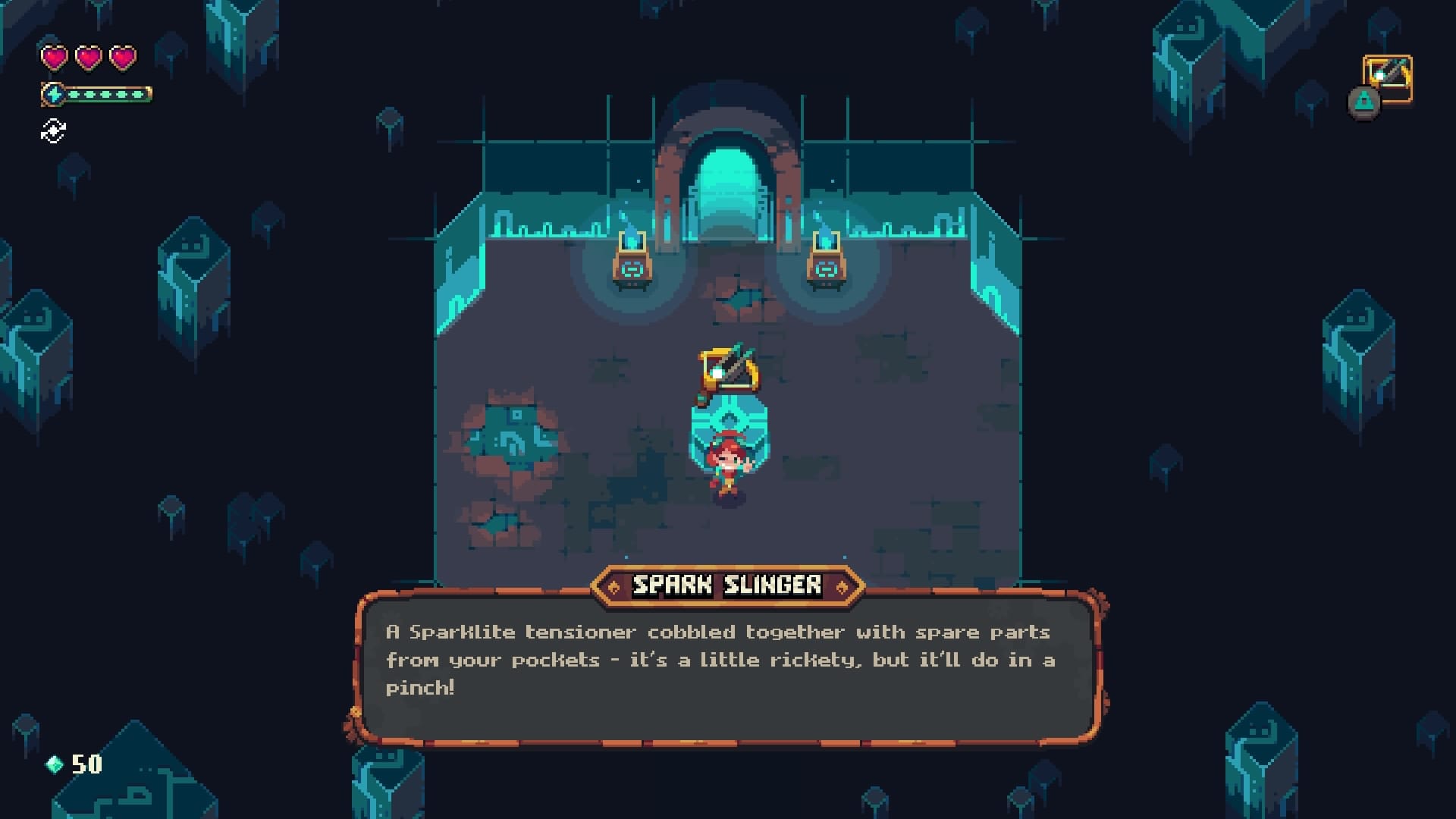
Final Thoughts
Sparklite is a game bursting with fresh ideas. But it’s also a game whose existence you might question. Who asked for a procedural take on Zelda?
It’s not the first to take a stab at it (Songbringer tried something similar back in 2017). Despite the competition, though, Sparklite offers up enough creativity and ingenuity to stand out from the crowd. And it does so with confidence and heart.
Various wrinkles hold its vision back. Progression starts off slow, then becomes a grind in the late-game. Exploration feels unnecessarily sluggish. Puzzles are simple, items are underwhelming, and there’s a general lack of polish throughout the experience.
But Sparklite provides some really astonishing highs. Combat is fast and responsive. Bosses are well-designed, and challenging yet fair. Better yet, the whole experience is enhanced by some gorgeous pixel art and beautiful music.
The concept needs work for — fingers crossed — any potential sequels, but the foundation is solid. In a year when even Nintendo itself couldn’t quite provide a satisfying procedural experience, Sparklite is an interesting proof of concept. More importantly, it gives me hope for the future of Zelda-likes.
Score: 7.8/10
Enjoy my Sparklite review? For more on the game, check out my PAX East 2019 Sparklite preview.
David is the founder of The Punished Backlog. He has a problem finishing games he starts.
Just beat: Donkey Kong Bananza.
Working on: Hollow Knight: Silksong.
Can't wait for: Metroid Prime 4: Beyond.
Follow David on Twitter at @David_Silbert to keep up to date with all things The Punished Backlog.


